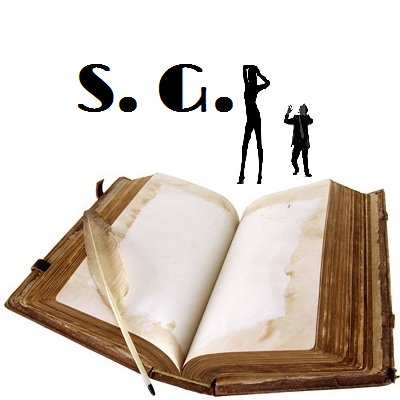Guten Morgen meine Damen und Herren!
Many moons ago, around or before 2011 and 2012, a series of illustrations were created under the heading “Historines.” These portrayed historical events using scripts written by Svip and art from creators such as Balsamique, DocSwell, Hexamous, Jacques00, ShadowPencil, Sutibaru, Woot, and Zdemain. Nation-states are portrayed by ultra-busty giantesses in these illustrations. They are attired in clothing representing their national flags and act as if they were the sole decision-maker for their respective entities.

Today, I’m looking at the most robust of these illustrated strips. It’s entitled “Unification!”, contains six color pages drawn by Jacques00, and tells the story of the formation of Germany in the 19th century. Prior to 1871, what we now call Germany was a loose confederation of German-speaking states. Of note, currently there are still German-speaking areas (such as Austria, the German-speaking Community of Belgium, Liechtenstein, Luxembourg to an extent, most of Switzerland, etc.) which share a common language (ignoring dialect differences for the moment), but are politically separate.


Unification begins with the 1864 conflict, the Second Schleswig War, involving Austria and Prussia against Denmark for control over the Duchies of Holstein, Saxe-Lauenburg, and Schleswig.
War in this strip is depicted in a decidedly more attractive fashion than the grim manner in which armed conflict is decided in reality. For instance, Prussia makes out with France to win control of Elsaß-Lothringen, in a rendition of the 1870 Franco-Prussian War.

Overall, this was an enjoyable read, and a particularly unique way to learn some history behind a modern highly-developed nation-state with the largest economy in Europe!
You can view this comic for free in its entirety at the following link: http://historines.f65.dk/#
Regarding the other Historines, most are single-panel illustrations without text, such as the following entitled “Nordic Council.”

Or the text is short, such as in the image below entitled “October Revolution.”

Unification is the only actual multi-page comic with text. Another, “Orient Express,” is listed as a seven-page comic, but has no dialogue or text included with the images themselves. That said, each Historine has its own “Info” page which gives background on the depicted historical events. For example, the information page for the above October Revolution reads:
With an ever growing population and a late industrialisation, the Russian Empire had a serious domestic issue regarding its working population; particularly those doing factory work. This problem eventually grew into a movement against the establishment and tried in 1905 to overthrow the government, but failed and its leaders were forced into exile.
The movement was largely silenced and attempted crushed by the Russian Empire and remained rather hidden until the outbreak of the First World War. As the Great War continued, many Russians feared for the government’s handling of the war and that the war was not at all in the Russian people’s interests, but rather that of the Tzar.
In March 1917, the February Revolution (February by the Julian calendar) broke out. While rather uncoordinated to begin with, it eventually lead to sacking of the Russian Empire and the establishment of a transfer council into a new Republic. But it did not end the Russians’ participation in the war, because its revolutionaries felt it could not abandon its European allies. However, the significance of this revolution should not be ignored, but to many it did not lead to the new socialist republic that had been hoped for.
In November 1917, the October Revolution (October by the Julian calendar) broke out as a discontent with the new rule and its intentions. Led by the same people of the 1905 revolution, the October Revolution managed to establish the Russian Soviet Socialist Republic to be ruled by the people. A consequence of which lead to the assassination of the Tzar and his family and a departure from the Great War. Unfortunately, it would not be long before the dreams of the revolutionaries would be crush by the greed and power hunger of lesser men.
Written by svip
Bottom line, looking at Historines is a fun way to learn history 🙂

This review is protected under Fair Use copyright law.
All Rights Reserved.

1 thought on “And Now for Something Completely Different – The 19th century unification of Germany!”